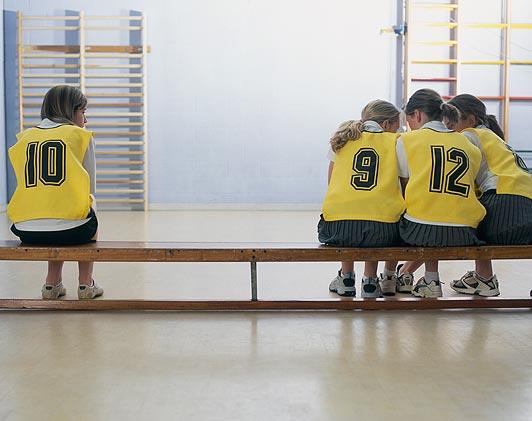Recent studies and reports have shed light on a troubling phenomenon within the world of organized sports: bullying. While sports have long been celebrated as a platform for teamwork, discipline, and personal development, a growing number of athletes and experts are raising concerns about environments where intimidation and harassment overshadow the intended benefits. This article explores the evolving trends of bullying inside organized sports, examining how competitive pressure, locker room dynamics, and coaching practices can sometimes create hostile atmospheres that drive participants away rather than drawing them in. As awareness increases, stakeholders are calling for urgent action to transform sporting spaces into safer, more inclusive arenas for all.
Bullying Dynamics in Team Sports Revealed Through New Research
Recent investigations into the social environment of organized sports have uncovered unsettling patterns of peer aggression that often go unnoticed. Rather than serving solely as venues for growth and camaraderie, many teams reveal complex social hierarchies where intimidation tactics are employed to establish dominance. These dynamics disproportionately affect younger and less experienced athletes, leading to diminished self-esteem and withdrawal from the sport. Key findings highlight that bullying in team settings is not random but structured, often perpetuated by influential players or even tacitly supported by coaching staff prioritizing winning over well-being.
According to the study, certain factors contribute significantly to these hostile atmospheres, including:
- Competitive pressure that fosters a zero-tolerance culture toward mistakes
- Unclear team roles, causing confusion and exclusion
- Lack of formal anti-bullying policies within athletic organizations
| Factor | Impact on Athlete | Reported Frequency |
|---|---|---|
| Pressure to Perform | Increased stress and fear | 78% |
| Unclear Team Roles | Feelings of exclusion | 63% |
| Absence of Policies | Lack of support systems | 71% |
Impact of Intimidation on Athlete Performance and Mental Health
Intimidation within sports environments can profoundly derail an athlete’s physical capabilities and psychological stability. Athletes facing persistent intimidation often experience decreased confidence, elevated stress levels, and disrupted focus, all of which critically hinder performance. These negative effects ripple beyond the playing field, manifesting as anxiety, depression, and in some cases, burnout. The mental toll not only compromises individual athletes’ potential but also deteriorates team cohesion and overall morale.
Key consequences of intimidation in sport include:
- Reduced concentration and decision-making skills during high-stakes moments
- Increased injury susceptibility due to compromised physical conditioning and heightened stress
- Withdrawal from competitions or entire sports programs, impacting talent development pipelines
| Impact Area | Short-Term Effects | Long-Term Effects |
|---|---|---|
| Performance | Loss of focus, reduced endurance | Decline in skill mastery, inconsistent outcomes |
| Mental Health | Stress, anxiety | Chronic depression, emotional withdrawal |
| Team Dynamics | Conflicts, reduced communication | Breakdown of trust, fragmentation |
Understanding these multifaceted effects is crucial for coaches, administrators, and policymakers aiming to cultivate safer and more inclusive sporting environments. Without addressing intimidation head-on, organized sport risks alienating the very individuals it seeks to empower, ultimately undermining the health and integrity of the athletic community.
Strategies for Coaches to Foster Inclusive and Safe Sporting Environments
Creating an environment where every athlete feels valued and protected begins with proactive leadership. Coaches must prioritize open communication channels, actively listening to players’ concerns and experiences without judgment. Implementing regular team meetings that include discussions about respect and personal boundaries can dismantle the silent acceptance of intimidation that often goes unnoticed. Furthermore, educating all members about the significance of diversity and inclusion fosters empathy and reduces the likelihood of bullying behaviors taking root.
Practical measures to embed inclusivity and safety in sports teams include:
- Establishing clear codes of conduct that explicitly forbid any form of bullying or exclusion
- Providing confidential reporting systems to encourage victims and bystanders to voice concerns
- Offering regular training sessions on emotional intelligence and conflict resolution for both coaches and athletes
- Celebrating diverse cultural and personal backgrounds to enhance team cohesion and respect
| Strategy | Key Benefit | Impact on Team |
|---|---|---|
| Clear Conduct Policies | Prevents harmful behavior | Increased trust and accountability |
| Confidential Reporting | Supports survivor empowerment | Early issue detection |
| Emotional Intelligence Training | Improves communication | Stronger interpersonal bonds |
| Cultural Celebrations | Fosters belonging | Enhanced team unity |
Policy Recommendations to Combat Bullying Within Organized Sports
To effectively address bullying within organized sports, it is imperative that governing bodies and organizations implement comprehensive, multi-layered policies designed to foster safe and inclusive environments. These should include mandatory training for coaches and staff focused on recognizing and intervening in bullying behaviors, along with establishing confidential reporting mechanisms that protect victims and witnesses from retaliation. Equally important is the promotion of a zero-tolerance stance on bullying, clearly communicated and consistently enforced, to ensure accountability at every level-from youth leagues to professional teams.
- Regular Assessment: Periodic evaluations of team culture and athlete well-being to identify risks early.
- Parental Engagement: Active involvement of parents and guardians in anti-bullying education.
- Empowerment Tools: Resources and workshops enabling athletes to advocate for themselves and peers.
Additionally, creating a structured framework for data collection on bullying incidents can empower sports organizations to tailor interventions more effectively. The table below outlines critical policy components that should be prioritized, serving as a baseline for instituting meaningful change across all disciplines.
| Policy Component | Description | Impact Focus |
|---|---|---|
| Training & Education | Mandatory workshops for all stakeholders | Awareness and prevention |
| Reporting Mechanisms | Anonymous and safe complaint channels | Vict It looks like the content was cut off at the end of the table row for “Reporting Mechanisms.” Would you like me to help you complete the table, summarize the information so far, or assist you with something else related to this content?
In ConclusionAs awareness of bullying within organized sports continues to grow, stakeholders face mounting pressure to create safer, more inclusive environments for athletes at all levels. The findings highlighted in Frontiers reveal a troubling dynamic where the very structures meant to foster teamwork and personal growth can instead serve as breeding grounds for intimidation and exclusion. Addressing these issues requires concerted efforts from coaches, administrators, parents, and the athletes themselves to challenge harmful norms and implement proactive measures. Only through sustained commitment can organized sport reclaim its role as a positive force-one that attracts participants through empowerment rather than deters them through fear.
Add A Comment
|





